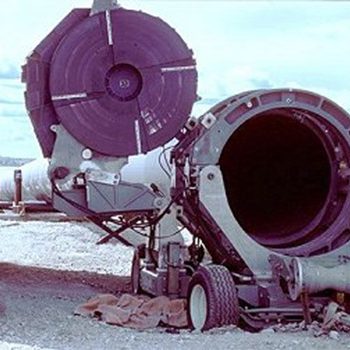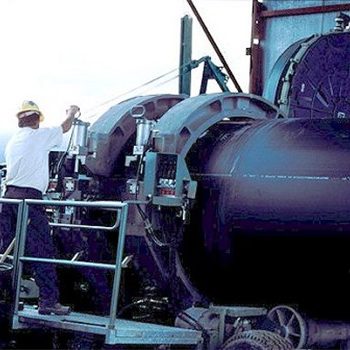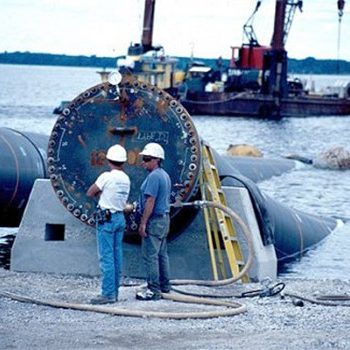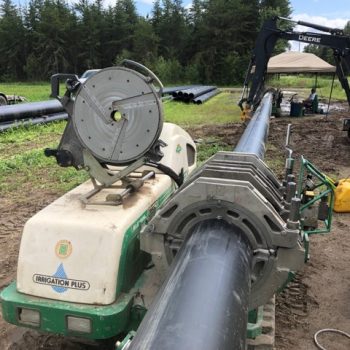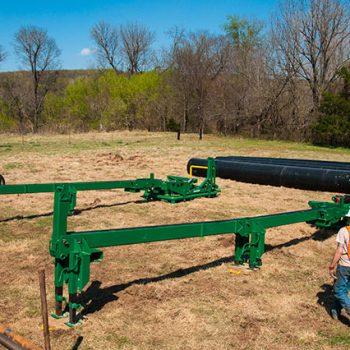Toronto, Canada — The city of Toronto is taking advantage of a natural resource that until recently, has been overlooked as a source of energy… Cold water.
Chilled water systems have already been used at a few locations including Cornell University and Hawaii to produce energy and cool buildings but Toronto’s Deep Lake Water Cooling (DLWC) project is the largest thus far and on schedule to be completed in 2004. The $180-million project has been called farsighted and visionary and is being applauded by conservationists.
54,000 feet of 63-inch High Density Polyethylene (HDPE) is being used for the closed loop pipeline system that will draw ice-cold water from a depth of almost 300 feet below the surface of Lake Ontario. After it is cleaned, the cold lake water passes through a heat exchanger and will eventually cool up to 100 Toronto buildings in the downtown area. The water is also serving a dual purpose by being distributed throughout Toronto as drinking water.
The energy requirements for a large building’s air conditioning system are significant. Approximately 45 percent of a large hotel’s total electric bill goes towards air conditioning and about 2/3 of that is for operating the chillers and cooling towers. Chilling this water requires approximately 1 ton of cooling for an average hotel room. Large buildings may take many thousands of tons. Therefore, operating the chillers comes at a significant power cost. With deep water-cooling procedures, the water arrives already chilled, eliminating the need for chillers. Estimates have concluded that deep-water cooling systems have a life-cycle cost of one-half that of conventional systems and the environmental benefits are staggering.
Engineers chose HDPE pipe mainly because of the way the pipeline could be installed. HDPE is resistant to the zebra mussels that are abundant in the lake and it doesn’t corrode. HDPE is also rapidly gaining acceptance in water applications worldwide because of its leak free qualities.
The 40-foot pipe sections are being joined on the shore of Lake Ontario with a McElroy MegaMc hydraulic fusion machine. The machine heat fuses polyethylene pipe together and the resulting joint is stronger than the pipe itself in both tensile strength and pressure conditions. The pipe is capped so that it will hold air and it is light enough to float. Concrete weights are attached to the pipeline and it will be towed a little over three miles off shore. When the pipeline is completed, the cap will be removed and the pipe will fill with water and sink to rest on the bottom of the lake.
The quality of Toronto’s drinking water will be improved but perhaps the greatest advantage of the system is that energy consumption will be lowered by 75 percent and electricity use lowered by 90%. In addition, emissions are reduced through a much lower use of fossil fuel and the complete elimination of CFC coolants. Carbon dioxide, nitrogen oxide, sulfur dioxide, smog, acid rain and green house gases will also be reduced. Enwave District Energy Ltd., the project owner, calculates that the air pollution reduction from the system will be the equivalent of taking 5,000 to 8,000 cars off the road.
As energy prices rise and clean air issues increase, cold water cooling may become the norm for any city on the coast or near a deep body of water. For now, engineers and environmentalists alike are applauding Toronto’s pioneering effort.
